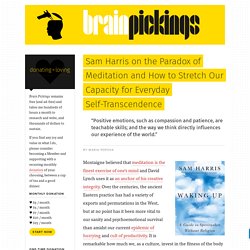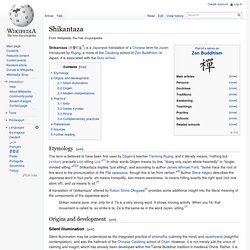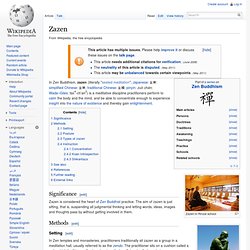

Conoscenza di sé e meditazione (Jiddu Krishnamurti) Conoscenza di sé e meditazione (Jiddu Krishnamurti) Tratto da: Verso la liberazione interiore (Guanda ed.)

L’altro giorno, quando ci siamo incontrati qui, parlavamo della necessità di una rivoluzione totale – una rivoluzione che fosse insieme interiore ed esteriore. Dicevamo che l’ordine è essenziale per avere la pace nel mondo; ordine non solo esteriore ma soprattutto interiore. Tale ordine non è mera routine. L’ordine è una entità vivente che non può determinarsi mediante la mera intellezione, mediante le ideologie, con svariate forme di comportamento coercitivo. L’abbiamo approfondito, credo, a sufficienza l’altro giorno. Penso sia importante comprendere questo punto. Ma quando si osserva il modo in cui questo disordine si è originato, si vede che dovunque ci sia stata autorità, specialmente autorità interiore, il disordine è inevitabile. Così, per la comprensione del disordine, vanno comprese le cause del disordine. Il vero non può essere sollecitato. David Lynch on Using Meditation as an Anchor of Creative Integrity.
Jack Kerouac on How to Meditate. La meditazione come Via. Noticing Space. In meditation, we can be alert and attentive; it’s like listening.

What we are doing is just bringing into awareness the way it is, noticing space and form. For example, we can notice space in a room. Most people probably wouldn’t notice the space; they would notice the things in it—the people, the walls, the floor, the furniture. But in order to notice the space, what do we do? We withdraw our attention from the things and bring our attention to the space. The space in a room is peaceful. Space is always present. Noticing the space around people and things provides a different way of looking at them, and developing this spacious view is a way of opening oneself. Life with a narrow view is suppressed and constricted; it is a struggle. The spacious mind has room for everything. We can apply this perspective to the mind, using the “I” consciousness to see space as an object. On the Way - Zen Journal. - Huang Po (d. 850) Our original Buddha-Nature is, in highest truth, devoid of any atom of objectivity.

Sam Harris on the Paradox of Meditation and How to Stretch Our Capacity for Everyday Self-Transcendence. Montaigne believed that meditation is the finest exercise of one’s mind and David Lynch uses it as an anchor of his creative integrity.

Over the centuries, the ancient Eastern practice has had a variety of exports and permutations in the West, but at no point has it been more vital to our sanity and psychoemotional survival than amidst our current epidemic of hurrying and cult of productivity. It is remarkable how much we, as a culture, invest in the fitness of the body and how little, by and large, in the fitness of the spirit and the psyche — which is essentially what meditation provides.
In Waking Up: A Guide to Spirituality Without Religion (public library), neuroscientist and philosopher Sam Harris argued that cultivating the art of presence is our greatest gateway to true happiness. Harris writes: Samadhi. Samatha. Shikantaza. Shikantaza (只管打坐?)

Is a Japanese translation of a Chinese term for zazen introduced by Rujing, a monk of the Caodong school of Zen Buddhism. In Japan, it is associated with the Soto school. Etymology[edit] The term is believed to have been first used by Dōgen's teacher Tiantong Rujing, and it literally means, "nothing but (shikan) precisely (da) sitting (za). A translation of "shikantaza" offered by Kobun Chino Otogawa[6] provides some additional insight into the literal meaning of the components of the Japanese word: Shikan means pure, one, only for it. Origins and development[edit] Silent illumination[edit] Silent illumination may be understood as the integrated practice of shamatha (calming the mind) and vipashyana (insightful contemplation), and was the hallmark of the Chinese Caodong school of Chan.
Shikantaza's origins can also be traced back to silent illumination. Dogen[edit] There is no meaning, there is no utility. Vipassanā. Vipassanā (Pāli) or vipaśyanā (विपश्यना, Sanskrit; Chn.

觀 guān; Tib. ལྷག་མཐོང་, lhaktong; Wyl. lhag mthong) in the Buddhist tradition means insight into the true nature of reality.[1][2] Zazen. In Zen Buddhism, zazen (literally "seated meditation"; Japanese: 坐禅; simplified Chinese: 坐禅; traditional Chinese: 坐禪; pinyin: zuò chán; Wade–Giles: tso4-ch'an2) is a meditative discipline practitioners perform to calm the body and the mind, and be able to concentrate enough to experience insight into the nature of existence and thereby gain enlightenment.

Zazen in Rinzai school Kosho Uchiyama writes that Auguste Rodin's The Thinker, in which the "back, waist, legs, arms, and even fingers" are curled up, is the opposite of zazen posture.[1] Significance[edit] Zazen is considered the heart of Zen Buddhist practice.